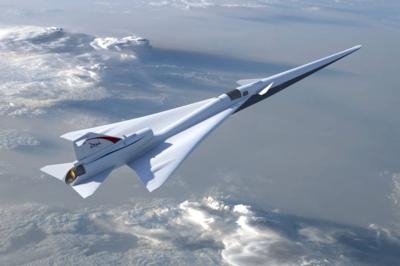Taking Steps To Advance The Development Of Civilian Supersonic Airplanes
As part of the Department of Transportation’s (DOT’s) priority on innovation in transportation, the DOT and the FAA are taking steps to advance the development of civil supersonic aircraft.

In line with this, the FAA is initiating two rulemaking activities on civil supersonic aircraft noise. The first activity is a proposed rule for noise certification of supersonic aircraft, and the second is a proposed rule to streamline and clarify the procedures to obtain special flight authorization for conducting supersonic flight-testing in the United States. The subsonic noise certification regulations of 14 Code of Federal Regulations (CFR) Part 36 do not apply to supersonic aircraft. The current rulemaking activity related to noise certification of supersonic aircraft will determine the technological and economic basis that supports noise level requirements that are appropriate for supersonic aircraft.
There is support in Congress for the advancement of new supersonic aircraft. Section 181 of the FAA Reauthorization Act of 2018 specifies that the FAA administrator exercise leadership in the creation of federal and international policies, regulations, and standards relating to the certification and safe and efficient operation of civil supersonic aircraft.
The publication of proposed rules will depend on the ongoing data and information gathering process being conducted. This is necessary in order for the FAA to fulfill its obligations under 49 U.S. Code (USC) 44715. The FAA anticipates meeting the statutory deadlines for the proposed rules. These deadlines are publishing a Notice of Proposed Rulemaking (NPRM) for noise certification of supersonic aircraft by March 31, 2020 and publishing a NPRM for streamlining the procedures to obtain a special flight authorization for testing by December 31, 2019. Notices of proposed rulemaking will be published in the Federal Register for public review and comment.
Considerations of the impact of sonic booms from supersonic flight preceded the development of the Concorde aircraft. The Aircraft Noise Abatement Act of 1968 directed the FAA, after consultation with the DOT, to “prescribe and amend standards for the measurement of aircraft noise and sonic boom,” and, “… such rules and regulations as the (administrator of the FAA) may find necessary to provide for the control and abatement of aircraft noise and sonic boom.” In 1970, acting under this authority, the FAA proposed a regulation that would restrict operation of civil aircraft at speeds greater than Mach 1, unless authorized by the FAA. The regulation was finalized with minor changes on March 28, 1973 and codified at (now) 14 CFR 91.817 and Appendix B to Part 91.

The FAA’s existing restrictions can be found at 14 CFR Part 91.817. In essence, that regulation prohibits anyone from operating a civil aircraft at a true flight Mach number greater than 1 over land in the United States and from a certain distance off shore where a boom could reach U.S. shores. There is a procedure that allows supersonic operation under certain conditions granted on an individual basis. In addition, any new aircraft would need to meet current airworthiness and noise certification requirements.
The two supersonic rulemaking activities would not rescind the prohibition of flight in excess of Mach 1 over land. At the same time, the FAA is working within the existing statutory and regulatory authority to consider the range of permissible supersonic operations. In addition, the FAA is assessing the current state of supersonic aircraft technology in terms of mitigating the noise impacts associated with supersonic overland flight. To this end, Section 181 also requires a biennial review of aircraft noise and performance data beginning on December 31, 2020 to determine whether to amend the current ban on supersonic flight by civil aircraft over land in the United States.
Since the FAA expects any new supersonic aircraft to operate internationally, we are collaborating with other national aviation authorities and working within the International Civil Aviation Organization (ICAO) Committee on Aviation Environmental Protection (CAEP) to develop international noise and emissions standards appropriate for future supersonic aircraft and the engines that power them.
Currently, U.S. law prohibits flight in excess of Mach 1 over land unless specifically authorized by the FAA for purposes stated in the regulations. The two supersonic rulemaking activities would not rescind the prohibition of flight in excess of Mach 1 over land.
(Source: FAA. Images from file)
 Airborne 04.16.24: RV Update, Affordable Flying Expo, Diamond Lil
Airborne 04.16.24: RV Update, Affordable Flying Expo, Diamond Lil ANN's Daily Aero-Term (04.20.24): Light Gun
ANN's Daily Aero-Term (04.20.24): Light Gun Aero-News: Quote of the Day (04.20.24)
Aero-News: Quote of the Day (04.20.24) Aero-News: Quote of the Day (04.21.24)
Aero-News: Quote of the Day (04.21.24) ANN's Daily Aero-Term (04.21.24): Aircraft Conflict
ANN's Daily Aero-Term (04.21.24): Aircraft Conflict




